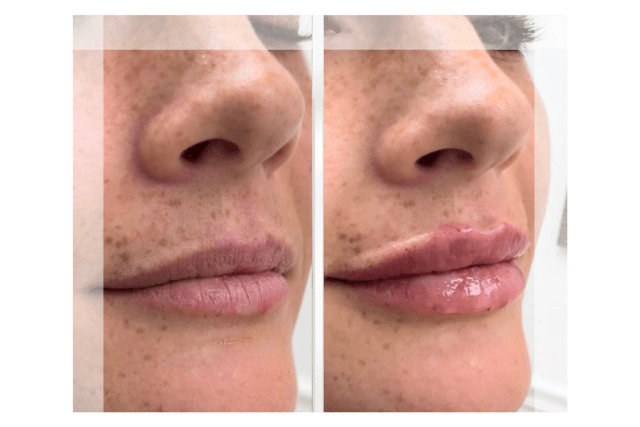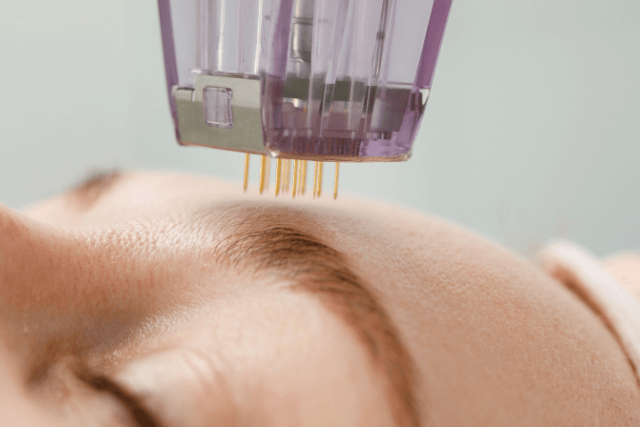Skin growths like cysts and moles are common, and most people will develop one or more in their lifetime. While many are harmless, some may grow, change, or become bothersome. That’s when cyst and mole removal becomes an important option. Whether you are dealing with a cosmetic concern or a suspicious lesion, safe removal can help protect your health and boost your confidence. In this blog, we’ll explain the entire process, from evaluation to healing.
We’ll also explore popular mole removal options, when removal is necessary, and how to care for your skin after treatment. If you’ve ever wondered what’s involved in cyst and mole removal, you’ll find everything you need to know here.
Understanding Skin Lesions
Before discussing treatment, it’s important to understand what cysts and moles are. Both fall under the umbrella of skin lesion treatment, but they are quite different in structure and cause.
What Is a Cyst?
A cyst is a closed sac that forms under the skin and may contain fluid, pus, or semi-solid material. Common types include:
- Epidermoid cysts
- Sebaceous cysts
- Pilar cysts
Most cysts are benign and slow-growing. However, they can become infected, painful, or unsightly. When this happens, a cyst removal procedure becomes necessary.
What Is a Mole?
A mole, or nevus, is a growth made of pigmented skin cells. Moles may be flat or raised and are often brown or black. Although most moles are harmless, some may develop irregular borders, change color, or bleed. These changes may signal a risk of skin cancer, which is why mole removal options should always be evaluated by a medical professional.
When to Consider Cyst and Mole Removal
Not all moles and cysts require removal. However, certain signs suggest it may be time to take action. Knowing what to look for can guide your next steps.
Medical Reasons for Removal
- Rapid growth
- Bleeding or oozing
- Pain or tenderness
- Changes in shape or color
- Frequent irritation or infection
In such cases, your healthcare provider will likely recommend cyst and mole removal to rule out more serious conditions.
Cosmetic Reasons for Removal
Sometimes, individuals seek treatment for aesthetic purposes. Moles or cysts on the face, neck, or other visible areas can affect self-confidence. In these cases, safe removal not only improves appearance but also quality of life.
Consultation and Diagnosis
If you’re considering cyst and mole removal, the first step is a medical consultation. During this visit, the provider will examine your skin and assess the lesion.
Skin Examination
The doctor may use a dermatoscope to magnify and inspect the mole or cyst. This helps distinguish between benign and suspicious features. If necessary, a biopsy may be performed to test the tissue before removal.
Personalized Treatment Plan
After the evaluation, your provider will recommend the best mole removal options or cyst removal procedure based on the type, size, and location of the lesion. You’ll also receive details on expected results and aftercare needs.
Types of Mole Removal Options
There are several effective methods for removing moles. Each one has specific uses depending on the mole’s characteristics. Your provider will choose the safest and most effective method for your needs.
Surgical Excision
Surgical excision involves cutting out the mole along with a small margin of surrounding skin. This method is often used for larger or suspicious moles. Stitches are used to close the wound. The sample may also be sent to a lab for analysis.
Shave Removal
For raised moles that are not cancerous, shave removal may be used. The mole is carefully shaved off at the skin surface using a sterile blade. This technique usually requires no stitches and results in a minimal scar.
Laser Removal
Laser therapy uses focused light energy to break down mole pigment. It’s typically used for flat moles and cosmetic removal. Although less invasive, laser removal may require multiple sessions and is not suitable for moles with irregular features.
Types of Cyst Removal Procedures
Just like with moles, there are various options for removing cysts. Your doctor chooses the right one based on the cyst’s type, size, and whether it shows inflammation or infection.
Complete Surgical Removal
This method is the most thorough. The surgeon completely removes the cyst sac to prevent recurrence. They often perform this method when the cyst remains intact and shows no signs of infection. The surgeon makes a small incision and gently extracts the cyst.
Incision and Drainage
For inflamed or infected cysts, drainage may be performed first. The cyst is opened, and its contents are drained. However, this method does not remove the cyst wall, so recurrence is more likely. Follow-up treatment is often necessary.
Minimal Excision Technique
This technique combines the benefits of full removal with a smaller scar. The doctor makes a tiny cut and squeezes out the cyst contents, followed by extraction of the cyst wall. This approach works best for smaller, non-infected cysts.
What to Expect During the Cyst and Mole Removal Procedure
Knowing what to expect during cyst and mole removal can reduce anxiety and prepare you for a smooth experience.
Before the Procedure
- You may be asked to avoid blood thinners
- The area will be cleaned and numbed with local anesthesia
- The procedure usually takes less than 30 minutes
During the Procedure
Your provider will remove the lesion using the method discussed. Most patients report minimal discomfort. You’ll remain awake and can usually leave immediately afterward.
Aftercare and Healing
Post-procedure care is essential for preventing infection and achieving a good cosmetic result. Instructions may include:
- Keep the area clean and dry
- Apply antibiotic ointment
- Avoid sun exposure during healing
- Return for suture removal if needed
Aftercare and Healing Tips
Proper aftercare is vital to prevent complications. In fact, the way you care for your skin after removal plays a major role in your final results. Whether you choose surgical excision or laser therapy, following the right steps can significantly speed healing and reduce scarring. Therefore, it’s important to stick to these proven tips.
Wound Care
First of all, gently wash the area with mild soap and water. After that, pat the skin dry and apply any ointments exactly as directed by your provider. In addition, cover the wound with a clean bandage if recommended, as this helps protect it from dirt and bacteria. Above all, avoid using harsh products that could irritate the healing skin.
Monitor for Signs of Infection
At the same time, it’s important to monitor the area closely. Watch for signs such as redness, swelling, warmth, or discharge. If any of these symptoms appear, contact your provider promptly. Because early action matters, treating infections early can prevent further complications.
Protect the Skin
Once the wound has closed, apply sunscreen with SPF 30 or higher. In particular, this helps prevent darkening of the scar due to sun exposure. Moreover, consistent sun protection improves the overall appearance of your skin over time. For best results, use sunscreen daily, even on cloudy days.
Avoid Picking or Scratching
Let scabs fall off naturally. Although it may be tempting, avoid picking or scratching the area. Otherwise, you risk increasing the chance of scarring or causing an infection. Instead, keep the area clean, moisturized, and undisturbed while it heals.
Long-Term Results and Maintenance
When done properly, cyst and mole removal provides lasting results. However, regular skin monitoring is still necessary.
Scarring and Skin Texture
Most procedures leave minimal scarring. Over time, scars usually fade. Proper aftercare and sun protection make a noticeable difference.
Recurrence Risk
If the surgeon does not fully extract the sac, the cyst may return even after complete removal. If a mole grows back, consult your provider immediately.
Skin Checks and Prevention
See a dermatologist annually for a full-body skin exam. Between visits, monitor your skin and report changes. Early detection remains the best defense against skin cancer.
Choosing the Right Provider
Your skin is delicate and important. For that reason, it’s essential to choose a qualified provider for cyst and mole removal.
What to Look For
- Board-certified dermatologist or surgeon
- Experience with mole and cyst procedures
- Clean, well-equipped medical setting
- Transparent communication and patient education
Ask the Right Questions
- Before scheduling, ask about:
- Removal method used
- Expected scar appearance
- Biopsy and pathology options
- Cost and insurance coverage
Cyst and Mole Removal for Children and Teens
Children may develop cysts or moles as they grow. In many cases, removal is not urgent. However, removal might be recommended if the lesion:
- Is frequently scratched or irritated
- Shows changes in color or size
- Affects the child’s confidence or comfort
Your pediatric dermatologist will guide you on the safest approach.
Cyst and Mole Removal for Older Adults
As we age, skin changes are common. Moles may grow larger, and cysts may form more frequently. In older adults, removal is often considered to:
- Rule out skin cancer
- Improve comfort
- Prevent infections
Since healing may take longer with age, proper aftercare becomes even more important.
Cyst and Mole Removal: Frequently Asked Questions
Is cyst or mole removal painful?
Most procedures use local anesthesia, making them virtually painless. Mild soreness afterward is common and manageable with over-the-counter pain relievers.
How long does recovery take?
Most patients resume normal activities within a day or two. Full healing can take a few weeks, depending on the size and location of the lesion.
Will insurance cover the procedure?
If removal is medically necessary, insurance may cover it. Cosmetic procedures are often paid out of pocket. Check with your provider for details.
Conclusion: Cyst and Mole Removal
Cyst and mole removal is a safe and effective way to manage skin lesions that cause concern or discomfort. Whether you need treatment for medical or cosmetic reasons, understanding your options helps you make informed decisions. From proper diagnosis to gentle aftercare, the entire process can be smooth and rewarding when done by a qualified provider.
By staying aware, asking the right questions, and following aftercare instructions, you can enjoy clearer skin and peace of mind. If you’re considering cyst and mole removal, schedule a consultation today with a trusted specialist to explore your options.





